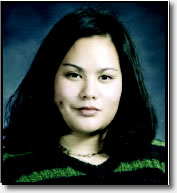|

"If not you, then who? If not now, then when?"
These inspirational words from Parker Mitchell, a co-CEO and
co-founder of Engineers Without Borders, came in his closing
speech at the second annual EWB-ISF National Conference.
More than 250 students from the U.S., the United Kingdom,
and 21 Canadian university chapters spanning from St. John's
to Victoria, gathered from Jan. 29 to Feb. 1 in Waterloo,
Ont., for the conference. Among this group were seven delegates
from the University of Calgary.
Over the course of the conference, the passion of the students
to make a positive impact in the world was evident. They were
further empowered by the words of great individuals such as
Naresh Singh, director general of governance and social development
at the Canadian International Development Agency; Flora MacDonald,
former secretary of state for external affairs; David Hughes,
president and CEO of Habitat for Humanity Canada; Dr. James
Orbinski, past-president of Médecins Sans Frontières/Doctors
Without Borders and a 1999 Nobel Peace Prize recipient; and
many other keynote speakers.
Through the experiences of the speakers, the students were
motivated and encouraged to continue to pursue their development
goals. They also obtained a greater understanding of the roles
engineering and technology play in international development.
Through panel discussions, development scenarios, workshops
on appropriate technology and overseas experience, a project
fair and poster presentations, students were provided with
the tools and resources to learn more about international
development. One of the more insightful conclusions, perhaps,
is that it is not solely technological answers that are important.
The process of asking the right questions ranks highly as
well.
In the end, Dr. David Johnston, president of the University
of Waterloo, compared the efforts of Engineers Without Borders
to a drop of food colouring in a glass of water. Though on
a larger scale, it is but one drop into a glass, more significantly
it is also another drop. It is one drop that can spread and,
given time, can eventually effect change.
Fast as Concrete
When we think of tobogganing, perhaps some childhood memories
of a wooden sled or crazy carpet on a cool winter afternoon
are triggered. But ask any civil engineering student about
tobogganing and you are certain to hear the word concrete
mentioned somewhere in their recollections.
What does concrete have to do with tobogganing?
Known for its unusual combination of concrete and snow, the
Great Northern Concrete Toboggan Race, a Canadian tradition,
occurred yet again this year, hosted by the University of
Alberta from Jan. 29 through Feb 2. This year's competition
attracted entries from about 19 universities, several of them
international.
The University of Calgary registered two teams, which included
the participation of 44 students. After the popular movie,
the Fast and the Furious, one team was named Fast and the
other Furious.
The Fast team sported grey coveralls and a yellow sled, while
Furious was easy to spot in blue coveralls with matching blue
sled. However, though esthetics does account for some points,
it is design characteristics such as the fastest, the safest,
and the most creative sled that will render you king of the
hill. This year's overall winner was the University of Manitoba.
GNCTR aims to combine engineering design concepts, concrete
mix design, and friendly competition. As Frankie Freckleton,
a member of Furious, says: "It is a chance for students
to have some fun, but at the same time apply some practical
knowledge."
|



